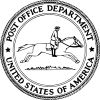George von Lengerke Meyer
George von Lengerke Meyer | |
|---|---|
 | |
| 43rd United States Postmaster General | |
| In office January 15, 1907 – March 4, 1909 | |
| Preceded by | George B. Cortelyou |
| Succeeded by | Frank H. Hitchcock |
| 40th United States Secretary of the Navy | |
| In office March 6, 1909 – March 4, 1913 | |
| Preceded by | Truman H. Newberry |
| Succeeded by | Josephus Daniels |
| Personal details | |
| Born | June 24, 1858 Boston, Massachusetts, U.S. |
| Died | March 9, 1918 (aged 59) Boston, Massachusetts, U.S. |
| Political party | Republican |
| Profession | Politician |
George von Lengerke Meyer (June 24, 1858 – March 9, 1918) was a Massachusetts businessman and politician who served as United States Postmaster General from 1907 to 1909 during the administration of President Theodore Roosevelt and United States Secretary of the Navy from 1909 to 1913 during the administration of President William Howard Taft.
A native of Boston, Meyer held positions in state and local government while also managing his business affairs. While in the Massachusetts Legislature, he served as Speaker of the House. Republican Presidents William McKinley and Theodore Roosevelt appointed Meyer to ambassadorships in Italy (1900-1905) and Russia (1905-1907).
Meyer also served as Roosevelt's Postmaster General, from 1907-1909, where he directed the introduction of the first stamp vending machines of the country and the first coil stamps necessary[1].
Upon taking office in March 1909, President Taft appointed Meyer to the position of Secretary of the Navy, a post which Meyer held throughout Taft's term. During this period, the Navy made its first experiments with aviation. In separate tests in 1910 and 1911, civilian pilot Eugene Ely proved the feasibility of carrier-based aviation, by taking off from and landing on a Navy warship.
Meyer retired from national politics in 1913, after Taft left office. He returned to Massachustts and died in Boston on March 9, 1918.
The Navy destroyer USS Meyer (DD-279), named in his honor, was commissioned December 17, 1919 and was in service until May 15, 1929.
External links
Notes and references
- ^ Lawrence, Ken (June 2008). "Celebrate the centennial of U.S. coil stamps". Scott Stamp Monthly. 26 (6): 18–24.
{{cite journal}}: Cite has empty unknown parameter:|coauthors=(help)




